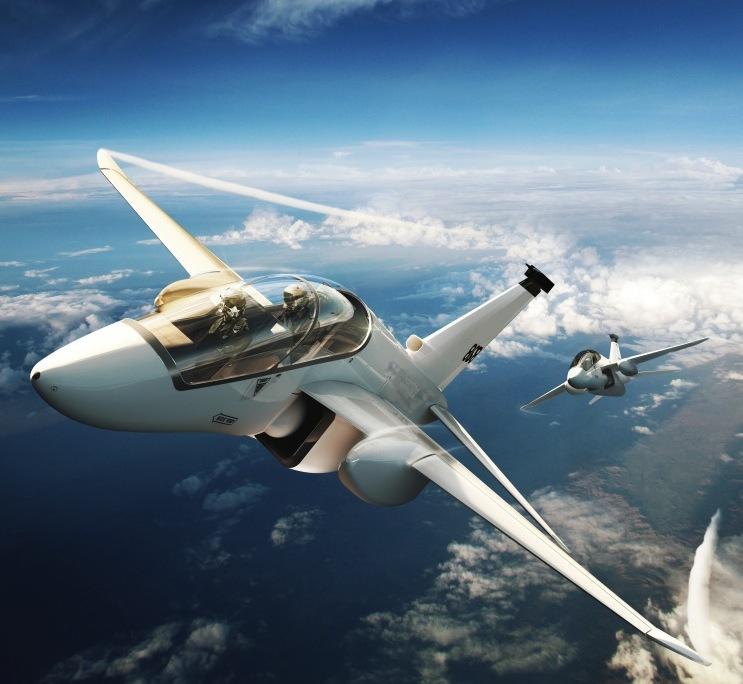A small British company, Dart Jet, hopes to revolutionize fast-jet pilot training thanks to a new family of trainer aircraft, specially designed to deliver fast-jet training capability in less time and at lower cost than conventional mixed-type trainer fleets.
The Dart concept has been developed by a small team of aircraft designers, ex-RAF Fast Jet instructors and test pilots, with support from UK Trade & Investment and Fielding Aerospace Consultants. The team has undertaken initial market research and completed over 3,000 hours of design development since 2010.
The company’s founder, Tristan Crawford, hopes to reverse the decline of the UK’s overall aircraft design capability with what it calls the world's first true family of trainer aircraft. Dart will use a common fuselage and centre wing with a family of outer wings and off-the-shelf engine, systems and components to address both the Basic and Advanced/Lead-in fighter trainer market, whilst also reducing operating costs through high commonality of spares, maintenance and support across the entire system.
Central to the concept is a common Mission Management System (MMS) that follows the student throughout Basic and Advanced training. Delivered via a tablet that interfaces with both ground-based training systems and the aircraft itself, the system also offers complete flexibility to train anywhere. The MMS also allows instructors to ‘flex’ the training and decide the order in which training modules are presented to suit better the strengths and weaknesses of each individual student.
Dart’s core feature is the cockpit interface. Centred around the most advanced fast-jet cockpit environment, the single-piece, full glass cockpit display is fully configurable to mimic most frontline combat aircraft types.
Dart’s flexible airframe design is achieved through two key elements; firstly a self-contained engine and air intake ‘pod’ optimised to accommodate a customer’s engine of choice. Second is the ability to assemble the aircraft with either a basic or high-performance wing. This ability to tailor the choice of engine and wing combination during manufacture and assembly should reduce the costs of airframe design and development.
The Basic Trainer variant, powered by a single 15.5kN-class engine, would feature a 3.5t max takeoff weight (MTOW) and a cruise speed of 350kts. The Advanced Trainer version would feature twin 29kN engines, 5t MTOW and Mach 0.9 cruise speed. An armed Light Attack version is also planned, offering 7t MTOW, a single 89kN engine with reheat and a top speed of Mach 1.2.
Dart Jet is currently seeking investment and industry partners with the aim of achieving entry into service in the early 2020s.

